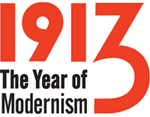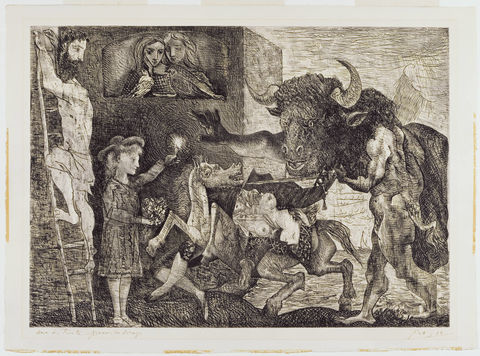x1986-104: La Minotauromachie (Minotauromachy)
Place made: Paris, France
La Minotauromachie (Minotauromachy), 1935
Etching, engraving, and scraper
plate: 49.3 x 69.1 cm. (19 7/16 x 27 3/16 in.)
sheet: 56.3 x 77.4 cm. (22 3/16 x 30 1/2 in.)
sheet: 56.3 x 77.4 cm. (22 3/16 x 30 1/2 in.)
Gift of Margaret Scolari Barr
x1986-104
© 2013 Estate of Pablo Picasso / Artists Rights Society (ARS), New York
Baer 573; Bloch 288
In the 1930s, at the height of his Surrealist phase, Picasso created some of his most innovative prints, often depicting the artist in his studio, the bullfight, and images of the Minotaur. All three of these themes are entwined in Minotauromachy, whose title pays homage to La Tauromaquia, Goya’s famed aquatint suite devoted to the bullfight. In classical mythology, the Minotaur was a monster with the body of a man and the head of a bull, representing unbridled animal instinct, but for Picasso the creature symbolized the artist’s savage alter ego, combining man and beast in a Freudian division of conscious and subconscious selves.










